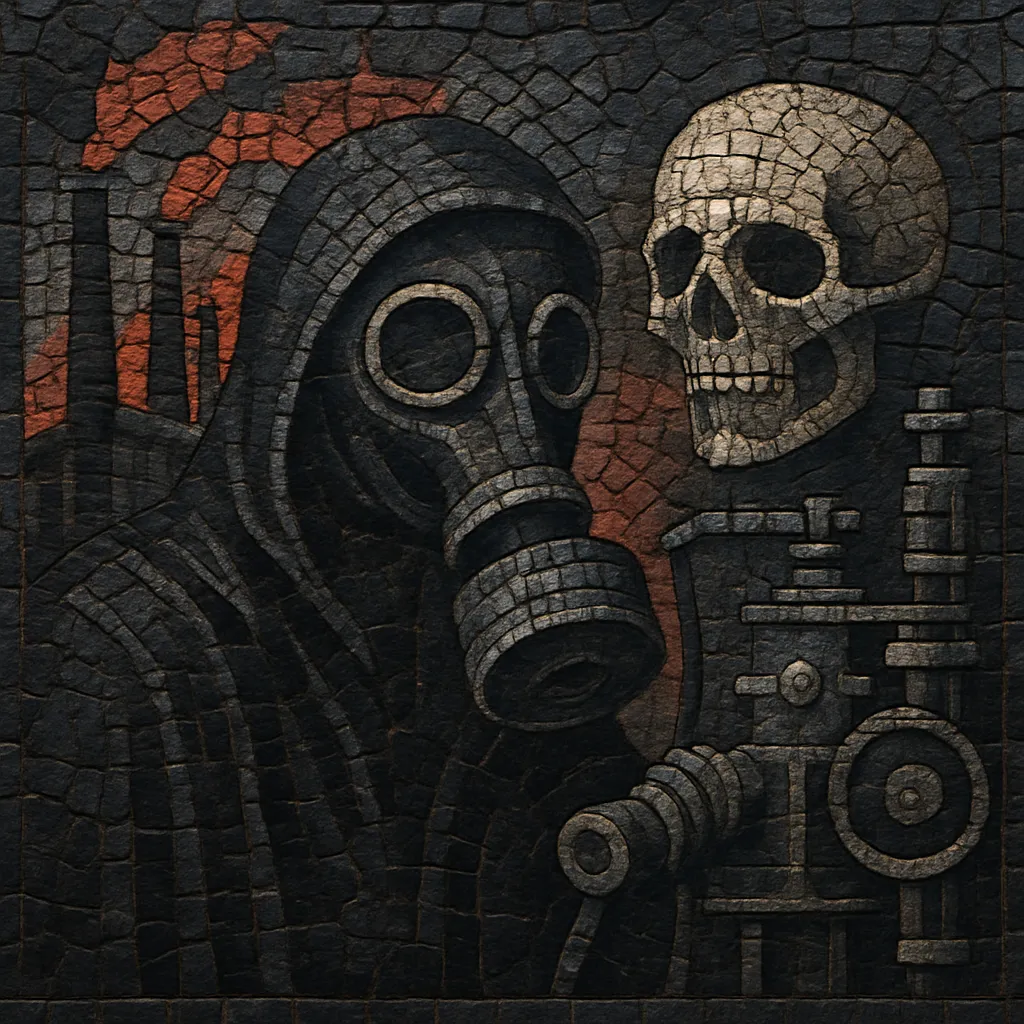Death industrial is a bleak, slow-moving offshoot of post-industrial music that fuses the oppressive electronics of power electronics with the cavernous atmospheres of dark ambient. It favors heavy, corroded textures, throttled dynamics, and a ritualistic sense of pace over conventional song structures.
Typical tracks revolve around grim loops of rumbling low-end, metallic drags, and asphyxiating drones, punctuated by sparse, reverberant percussion and eruptions of saturated noise. Vocals—when present—are usually shouted, whispered, or processed into inhuman growls, often conveying themes of death, decay, pathology, and abjection. The production aesthetic embraces tape hiss, feedback, clipping, and analog grime, creating a sense of claustrophobic physicality.
Death industrial coalesced in the early 1990s, with antecedents in the late 1980s Scandinavian post‑industrial underground. Swedish artist Roger Karmanik helped shape its core vocabulary first as Lille Roger and then as Brighter Death Now, and through the Cold Meat Industry label he founded, which provided a home for artists exploring slow, suffocating hybrids of industrial noise and dark ambient.
Throughout the 1990s, labels like Cold Meat Industry (Sweden), Slaughter Productions (Italy), and later Malignant Records (USA) disseminated a distinct aesthetic: oppressive loops, corroded textures, and mortuary-themed artwork. Artists such as Megaptera, Atrax Morgue, IRM, and Deutsch Nepal refined the style’s emphasis on minimal, dirge-like structures and highly tactile distortion. The scene maintained close ties to power electronics and dark ambient, while remaining slower, heavier, and more ritualistic than either.
In the 2000s, projects like Navicon Torture Technologies and Steel Hook Prostheses further codified the genre’s medicalized and post-apocalyptic imagery, while the 2010s saw a renewed interest via acts such as Trepaneringsritualen and a thriving network of festivals (e.g., Maschinenfest, Wroclaw Industrial Festival) and boutique labels. Digital platforms broadened access, but the sound’s essence—malign atmosphere, physical distortion, and funereal pacing—remains intact.


